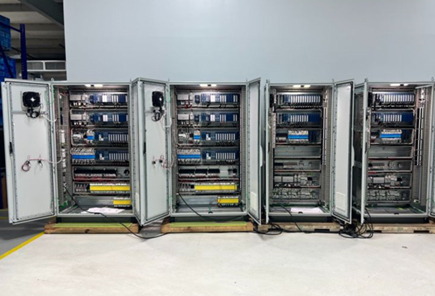In today's fast-paced world, industries across the globe are constantly striving for greater efficiency and productivity. One of the key factors driving this quest for optimization is the adoption of automated control systems. These systems have the potential to revolutionize industries by streamlining processes, reducing errors, and increasing overall productivity.
Automated control systems are sophisticated technologies that use computers and software to monitor and control various operations. They are designed to replace or enhance human intervention in tasks that are repetitive, time-consuming, or prone to error. By automating these tasks, industries can save time, resources, and manpower, ultimately leading to increased profitability.
One industry that has greatly benefited from the implementation of automated control systems is manufacturing. In the past, manufacturing processes relied heavily on human intervention, leading to inefficiencies and errors. However, with the advent of automated control systems, manufacturers can now optimize their operations by minimizing downtime, reducing errors, and improving overall quality control.
For example, in the automotive industry, automated control systems are used to control and monitor the assembly line. These systems ensure that each step in the manufacturing process is carried out accurately and efficiently, resulting in higher-quality vehicles and shorter production times. In addition, automated control systems can also detect and diagnose faults in real-time, allowing manufacturers to quickly address any issues that may arise.
Another industry that has witnessed significant changes due to automated control systems is agriculture. With the growing demand for food production, farmers are under increased pressure to maximize yields while minimizing costs. Automated control systems have played a crucial role in achieving these goals by optimizing farming practices and improving resource management.
For instance, automated irrigation systems are used in agriculture to monitor and control the watering of crops. These systems analyze data such as soil moisture levels, weather conditions, and plant water requirements to determine the optimal amount of water needed. By automating this process, farmers can ensure that crops receive the right amount of water at the right time, leading to improved plant health and higher yields.
The healthcare industry is another sector that has embraced automated control systems. These systems have the potential to improve patient care, reduce medical errors, and enhance overall efficiency in healthcare facilities.
Automated control systems are used in hospitals to control and monitor various processes, such as medication dispensing, patient monitoring, and inventory management. By automating these tasks, healthcare professionals can focus more on patient care and spend less time on administrative work. This ultimately leads to faster and more accurate diagnoses, improved patient outcomes, and increased overall efficiency in healthcare delivery.
Overall, automated control systems have transformed industries by revolutionizing processes, increasing productivity, and improving overall efficiency. From manufacturing to agriculture to healthcare, these systems have shown tremendous potential in streamlining operations and reducing costs.
As technology continues to advance, the potential for automated control systems to further revolutionize industries is limitless. From advanced artificial intelligence algorithms to the Internet of Things (IoT), the future of automated control systems looks promising.
However, it is important to note that while automated control systems offer numerous benefits, they also come with certain challenges. These include high upfront costs, the need for skilled technicians to operate and maintain the systems, and potential security risks associated with the digitalization of operations.
Despite these challenges, the benefits of automated control systems far outweigh the drawbacks. As industries continue to strive for greater efficiency and productivity, the adoption of these systems will undoubtedly play a crucial role in their success.
